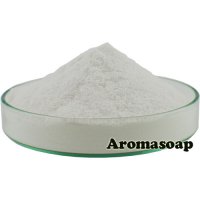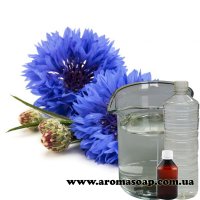High molecular weight sodium hyaluronate (hyaluronic acid)
INCI: Sodium Hyaluronate, high-molecular
Description of appearance: white powder or granules.
D-glucuronic acid content: 47.1%.
Main substance content: 97.3%.
Transparency(0.1% solution): 99.6%.
Molecular weight: 1.3x106 -1.5x106
Protein content:0.04%.
Loss on drying: 6.6%.
pH (0.5% solution): 6.6.
Heavy metals: <20ppm.
General microbiological purity: <100 CFU/g
Molds and yeasts: <100 CFU/g
E. Coli: not detected.
Pseudomonas aeruginosa: not detected.
Staphylococcus aureus: not detected.
Solubility: dissolves slowly in water, creating a gel-like structure
High molecular weight hyaluronic acid is perhaps the best component for moisturizing the skin. Its chemical composition is a polysaccharide; it is found in all tissues of the body and actively participates in intracellular processes. Under natural conditions, hyaluronic acid is produced by connective tissue cells. But with age, a well-established mechanism fails, and the skin begins to lose moisture.
That’s why “beauty injections” using hyaluronic acid are so popular today. By delivering it directly to the skin, you can achieve a lifting effect, making the skin smooth and moisturized.
Not everyone is ready to resort to such a procedure, but there is another opportunity to saturate the skin cells with such an essential element. Therefore, this component is widely used as an active in cosmetics.
Cosmetic effect Sodium hyaluronate (high molecular weight)
High molecular weight hyaluronic acid in cosmetics allows you to achieve various effects:
- it forms a thin film on the skin that actively absorbs moisture from the environment, retaining it in the stratum corneum. Thus, surface hydration of the skin is ensured and at the same time a protective barrier is established;
- hyaluronic acid (high molecular weight) is an excellent remedy for damaged skin, protecting it while restoration processes take place;
- promotes regeneration of the skin without scars;
- protects the skin from infections, since it is difficult for bacteria to penetrate the structure of the film, indispensable in the treatment of acne;
- provides an instant lifting effect by creating a polymer microfilm on the skin.
Scope of application Sodium hyaluronate (high molecular weight)
High molecular weight hyaluronic acid is used in cosmetics such as:
- lipstick (decorative and hygienic),
- lifting masks
- after-sun products
- anti-cellulite creams
- anno-healing agents.
The percentage of input into cosmetic formulas is small and ranges from 0.01 to 0.5%, depending on the desired effect. It is worth remembering that the regular intake of too large doses of hyaluronic acid from the outside will contribute to the fact that this substance will no longer be produced by the body on its own. An addiction effect will occur, and as a result, the skin will again receive all the signs of a lack of hyaluronic acid - dull color, dryness and wrinkles. Therefore, for daily use, creams with a small active content should be used.
The concentration of high molecular weight hyaluronic acid in the recipes is as follows:
1. Creams, milk, gels, lotions for the face – 0.01-0.1%;
2. Sunscreen cosmetics – 0.1-1%;
3. Hair cosmetics and liquid body products – 0.001-0.5%.
The component is a white powder, highly soluble in water. When producing cosmetics, the component must first be dissolved in the aqueous phase (a small amount) to form a viscous, slightly shimmering gel. It should be added at the end of cooking.










